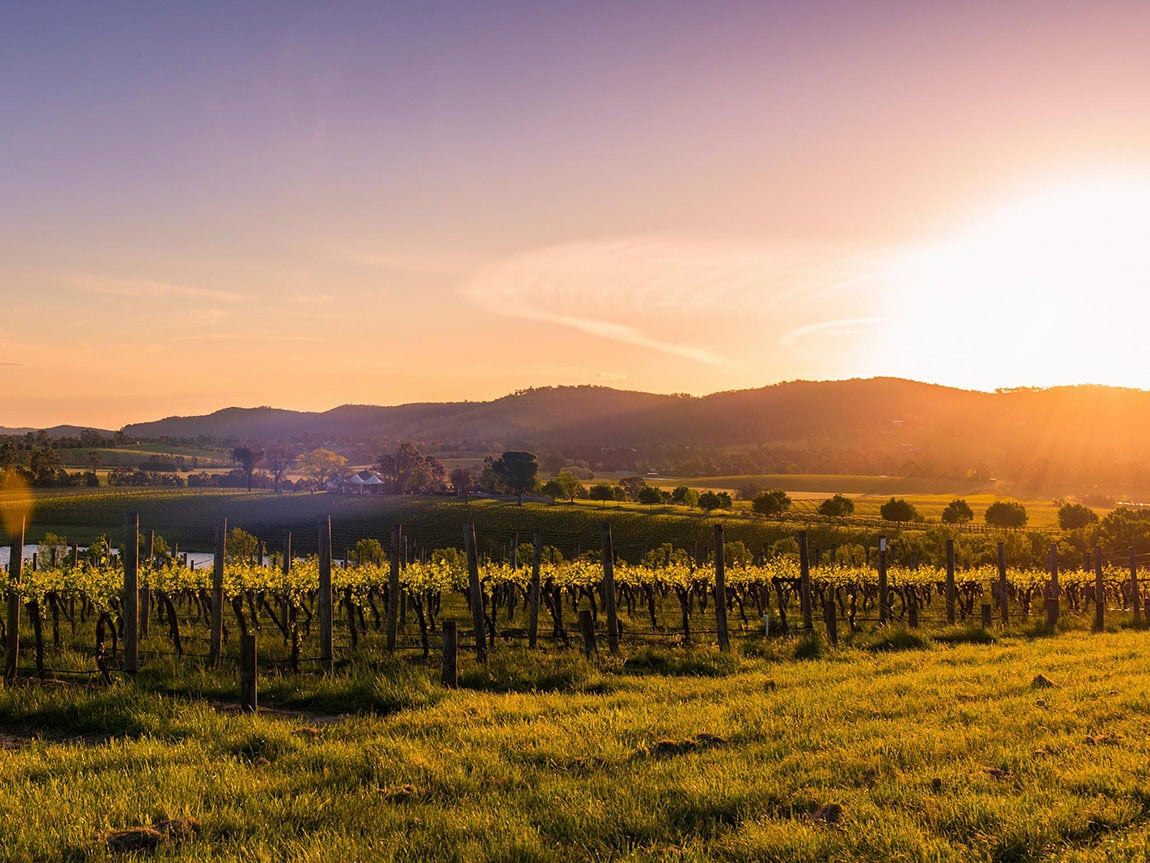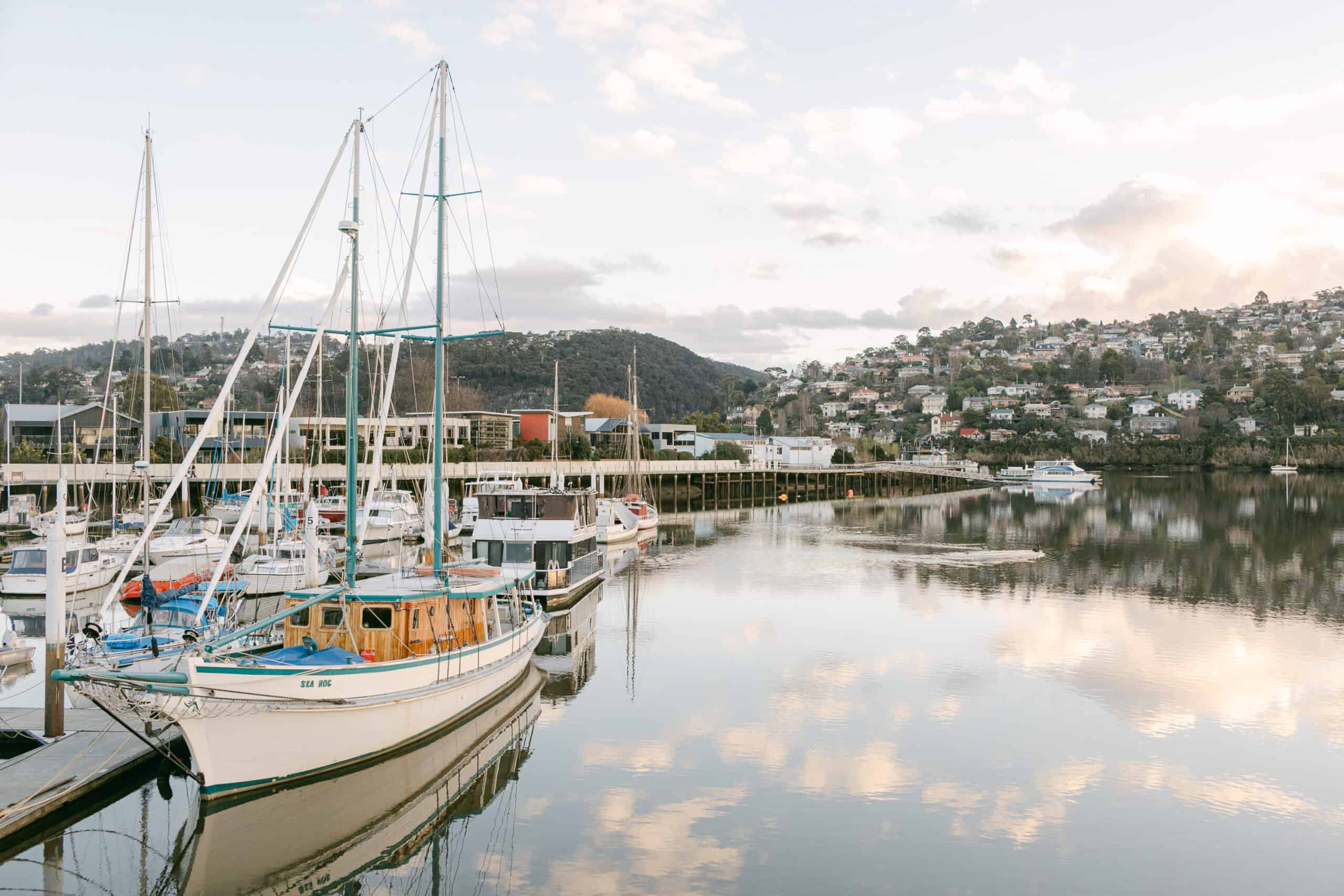The National Parks in Tasmania You Need to Visit at Least Once
It’s no secret that the Apple Isle is a wilderness wonderland, so here are the national parks in Tasmania to put at the top of your must-visit list.

Australia’s southernmost state is arguably its most beautiful. From snowy peaks to pristine lakes, mossy rainforests, dramatic waterfalls and untouched beaches, there’s a national park in Tasmania for literally every season. But with 19 national parks packed into one state, it’s tough to know where to venture first. We’ve listed some of the national parks in Tasmania that are simply unmissable, so pack your walking shoes and get exploring.
Before you go, it’s important to note that all of Tasmania’s national parks require a pass for entry, and while most parks have Visitor Centres where you can purchase these, the more remote parks can be unstaffed. For this reason, it’s easiest to visit the Parks and Wildlife Service website to get a pass before you head out on your adventure.
A daily pass is $22.35 per person (or $44.75 per vehicle, up to eight people), while a holiday pass ($44.75 per person or $89.50 per vehicle, up to eight people) covers you for entry to every Tassie national park for up to two months.

Franklin-Gordon Wild Rivers National Park
With Cradle Mountain and Freycinet often stealing the spotlight, Franklin-Gordon Wild Rivers National Park remains an untouched wilderness of towering gorges, ancient rainforests, and rushing rivers. A UNESCO World Heritage-listed wonder rich in history and Indigenous heritage, it’s a paradise for adventurous souls—think epic hikes, misty landscapes, and thrilling river journeys. Explore short walks like Nelson Falls or take on the legendary Frenchmans Cap Track. For the ultimate adventure, cruise or kayak along its wild rivers. If you crave raw, untamed beauty away from the crowds, this is the Tasmanian national park that deserves a spot on your 2025 bucket list.
Park entry: Daily entry starting at $46.60 per vehicle or $23.25 per person—available online or at visitor centres across Tasmania.
Franklin-Gordon Wild Rivers National Park, Tasmania
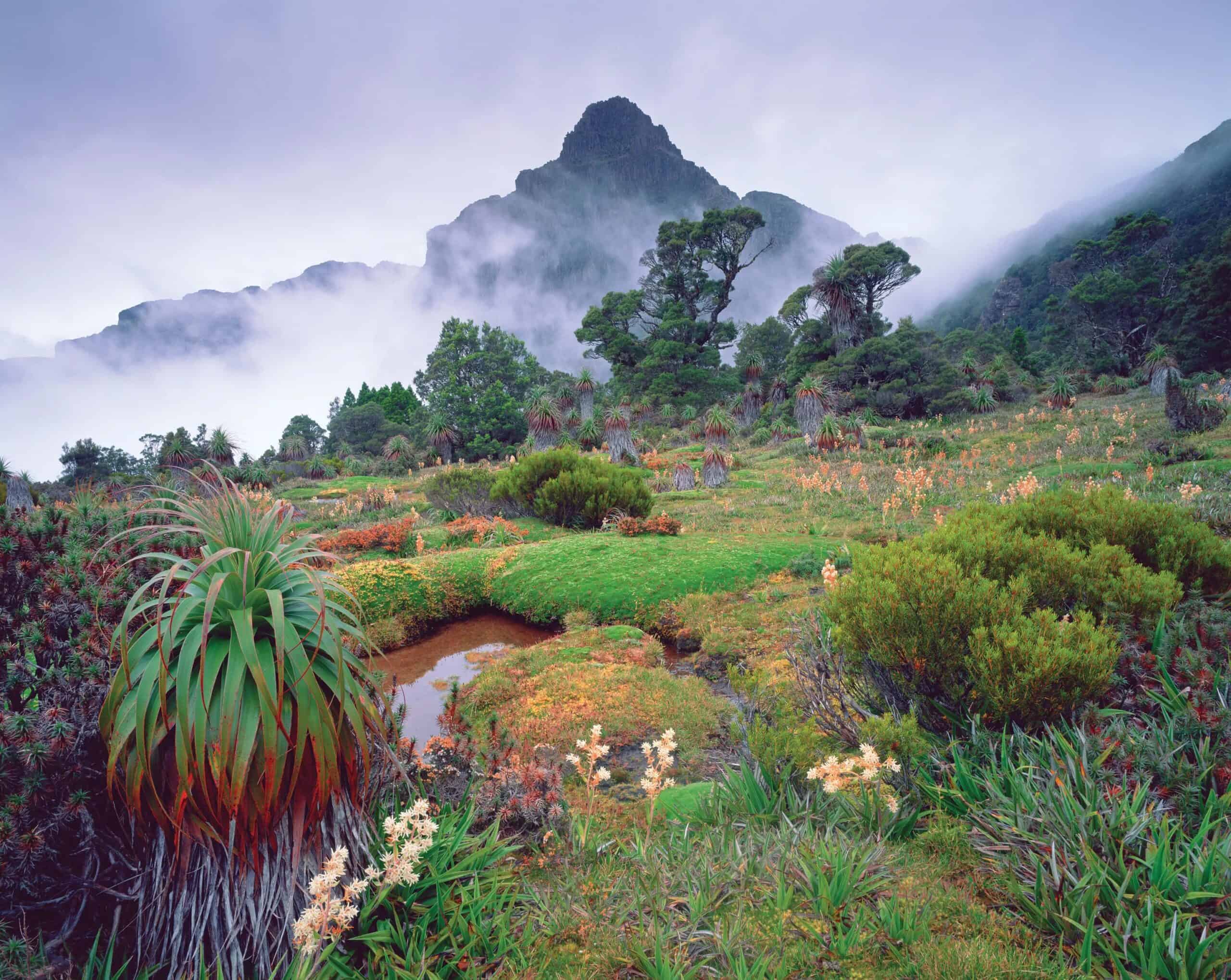
Southwest National Park
If you’re after a wild, remote, and rugged national park experience, buckle up and head south – way south – to Southwest National Park. The largest national park in Tasmania covers almost 10 percent of the state and is packed with adventures, from the challenging South Coast Track hike (which takes several days to complete) to short walks, stunning Lake Pedder and Lake Gordon, beaches, camping facilities, kayaking, and plenty of native Tasmanian wildlife.
There are two roads in, both about a two-hour drive from Hobart – Gordon River Road, the best access point for Lakes Pedder and Gordon, or drive to the literal end of Australia via the Huon Highway to its southernmost point at Cockle Creek.
From there, hike the four-hour return South Cape Bay Track along the coast and experience true end-of-the-earth serenity. Keep an eye out for old graves as you walk by – they certainly add an eerie vibe to this remote location.
Park entry: A valid parks pass is required. A daily vehicle pass (covering up to 8 people) costs $46.60, while an individual daily pass is $23.25. For extended visits, a Holiday Pass offers access to all national parks for up to two months at $93.15 per vehicle or $46.60 per person.
Southwest, Tasmania

Mt Field National Park
The turning of the fagus is a peak autumn experience in Tasmania – and nowhere is it more spectacular than at Mt Field National Park. Witness the breathtaking transformation of the Tarn Shelf as the fagus trees paint the hillsides in hues of gold, orange, and red.
Mount Field is truly a park for all seasons, offering unforgettable experiences year-round. It’s home to some of the world’s tallest eucalypt forests, an abundance of unique alpine vegetation, pristine waterfalls, and alpine tarns.
The awe-inspiring Russell Falls are among the most magnificent waterfalls in Tasmania. Wander through lush ferns to reach this natural wonder, then venture to Lake Dobson for longer hikes or winter skiing at Mount Mawson.
Part of the UNESCO Tasmanian Wilderness World Heritage Area, we believe it’s essential to explore the enchanting beauty of Tasmania’s oldest and most diverse park.
Park entry: A day pass is $23.25 per person / $46.60 per vehicle, for up to eight people
Mount Field Visitor Centre, 66 Lake Dobson Road, Tasmania

Freycinet National Park
If there’s one Tasmanian national park almost as well known as Cradle Mountain, it’s Freycinet National Park. Home to the iconic Wineglass Bay, this jewel of the east coast is a must-visit, especially if panoramic views of wide, white-sand beaches and glorious coastal landscapes are your thing.
Walk the Wineglass Bay track and take a (most likely freezing) dip in the clearest water you’ve ever seen, then loop back around on the Hazards track to where you started – it will take you just over four hours in total.
As you hike, you’ll pass the Hazards – dramatic granite mountains that rise up on the shores of stunning coves. With its relatively mild weather, Freycinet National Park is also a great place to camp if you don’t want to pack your visit into one day.
Park entry: A day pass is $23.25 per person / $46.60 per vehicle, for up to eight people
Coles Bay, Tasmania

Walls of Jerusalem National Park
The Walls of Jerusalem National Park is an alpine wonderland waiting to be explored by foot. A secluded dream in Tasmania’s Wilderness World Heritage Area, this stunning park is a labyrinth of tarns, towering dolerite peaks, and ancient pencil pine forests. The landscape shifts unpredictably, offering dramatic views at every turn. With no road access, the park is a true hiking adventure—rewarding those who venture into its remote beauty with crisp air, wild alpine gardens, and a sense of awe.
Park entry: A day pass is $23.25 per person / $46.60 per vehicle, for up to eight people
Walls of Jerusalem National Park, Tasmania
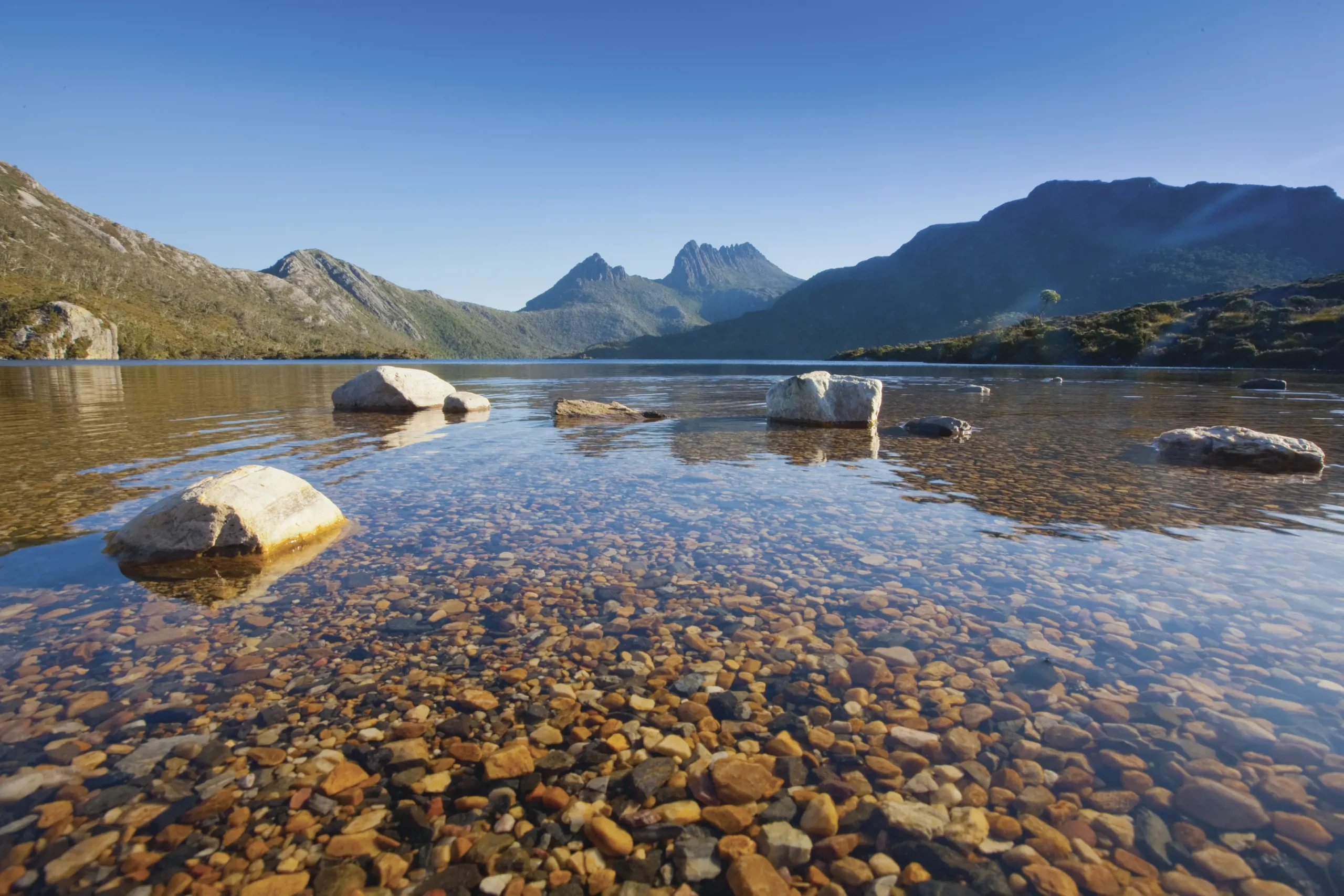
Cradle Mountain-Lake St Clair National Park
It’s an obvious choice, but you can’t create a list of the best national parks in Tasmania without including this stunner. Located in the northwest of the state, this World Heritage Wilderness area is about two hours’ drive west of Launceston and four hours from Hobart, attracting more than 300,000 visitors each year.
Once you arrive and take the shuttle from the Visitors Centre to the iconic Dove Lake (yes, the one from all the photos) with its dramatic border of glacial peaks, you’ll quickly understand why Cradle Mountain-Lake St Clair National Park is so beloved.
There’s a range of walks, from shorter strolls to the famous 65-kilometre Overland Track hike (which takes about six days and must be booked in advance). No matter what you decide to do, you’ll be treated to unforgettable views and close encounters with the wombats, echidnas, and birds that call the area home.
The turning of the fagus is also a peak autumn experience within the national park – an unmissable seasonal spectacle.
Park entry: Note that Cradle Mountain isn’t included in the Daily Parks Pass. The Icon Daily Pass is $27.95 for adults or $67.10 per family, and includes the Dove Lake shuttle service. The shuttle runs from 8am – 6pm.
Limited access by private vehicle is allowed outside these hours, but there’s only nine vehicle spaces and one disabled space. Private vehicle access isn’t allowed during shuttle bus operating times.
Cradle Mountain, Tasmania

South Bruny National Park
Another wildly popular destination is Bruny Island, off the southeast coast of Tasmania. You’ll need to drive to Kettering, about 30 minutes from Hobart, where the car ferry departs throughout the day. Prices vary depending on the time (earlier is cheaper – plus you’ll be in a much shorter queue), but you can also pre-pay online for a flat return trip fee of $50.60 for a vehicle under six metres.
While you can visit Bruny Island without venturing into South Bruny National Park, it’s well worth the trip and home to some of the island’s most beautiful sights, from the quaint lighthouse to incredible walks like the Labilliardiere Circuit.
Be sure to factor in a stop at The Neck lookout when driving on the narrow strip of road from north to south. Walk up the stairs to take in the spectacular 360-degree views and pay respects at the memorial for Truganini, the Nuenonne woman who was a figure of colonial resistance for First Nations people during the 1800s.
Park entry: A day pass is $23.25 per person / $46.60 per vehicle, for up to eight people
Sitchu Tip: The Bruny Island Ferry runs from 6.10am to 7.15pm on weekdays and 6.30am to 7.00pm on weekends.
Bruny Island, Tasmania

Maria Island National Park
One of the most incredible experiences in Tasmania is Maria Island, located off the mid-east coast. Unlike Bruny Island, the entire island is a national park, so you’ll need a Parks Pass to explore. Encounter Maria Island operates a daily 30-minute ferry service from Triabunna, with return tickets priced at $52 per person. No cars are allowed, so walking or cycling is the way to go.
The island is teeming with wombats, best spotted in the early morning or late afternoon. Don’t miss the Painted Cliffs Track, the convict heritage site at Darlington, or the challenging Bishop and Clerk walk.
Park entry: A day pass is $23.25 per person / $46.60 per vehicle, for up to eight people
Sitchu Tip: It’s open 24 hours for visitors, but the first ferry from Triabunna leaves at 8.15am and the last ferry departs Maria Island at 4.15pm, with extra services added during peak season.
Maria Island, Tasmania
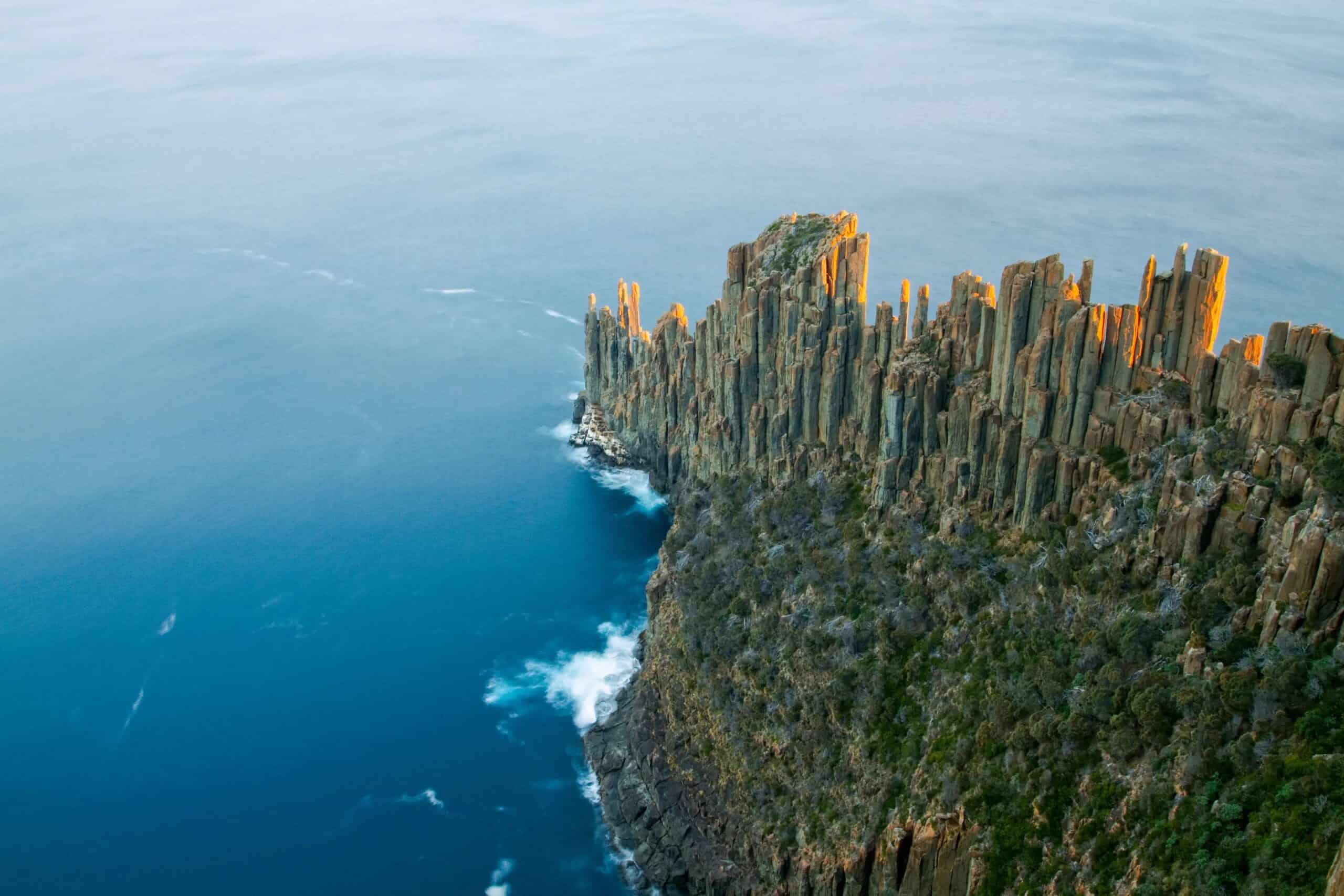
Tasman National Park
East of Port Arthur lies this truly iconic Tasmanian national park, known for its dramatic landscapes. Covering a large part of the Tasman Peninsula’s coastline, it’s home to Australia’s highest sea cliffs and towering rock formations, including the Totem Pole, which rises 65 metres and attracts daring rock climbers from across the globe. Other standout features are the Tasman Arch and the Devil’s Kitchen, shaped by millions of years of waves crashing into the rock.
For keen walkers, the Three Capes Track offers a 48-kilometre hike, starting at Denmans Cove, showcasing the area’s stunning shoreline views. Bookings are essential.
For a more relaxed experience, wilderness cruises provide breathtaking views of the Peninsula, with opportunities to spot wildlife like sea eagles, seals, and dolphins.
Park entry: A day pass is $23.25 per person / $46.60 per vehicle, for up to eight people
Fortescue, Tasmania

Hartz Mountains National Park
Notice the mountains, plural? A trip to Hartz Mountains National Park, a favourite with bushwalkers, offers views of seemingly endless rows of peaks rolling into the state’s Southwest Wilderness Area. You’ll forget you’re even close to civilisation when all you can see are mountains, glacial lakes, and waterfalls, especially if you tackle the Hartz Peak walk, which rewards hikers with incomparable vistas.
That said, this area also offers an abundance of easy, short walks, like the charming 20-minute stroll to Arve Falls, the longer walk through rainforest to Lake Osborne, and even a five-minute jaunt to the Waratah Lookout for your first taste of Hartz Mountains National Park’s majestic beauty.
Park entry: A day pass is $23.25 per person / $46.60 per vehicle, for up to eight people
Southwest, Tasmania

Narawntapu National Park
If you’re a beach lover and animal enthusiast, this Tasmanian national park, located about an hour from Launceston, delivers both in spades. Known unofficially as “Tasmania’s Serengeti,” it’s here you’ll spot Forester’s kangaroos, Bennett’s wallabies, and pademelons as soon as you arrive at the Visitor Centre at Springlawn.
The landscape at Narawntapu, located on the north coast of Tasmania, is unique – think wetlands, wide grassy plains, a lagoon, long stretches of beaches, and coastal heathland. Locals love to camp here due to the mild weather and abundant wildlife.
The 4-kilometre Springlawn Nature Walk is a wonderful circuit to stroll, especially at dusk when all the local animals come out to play. You can also challenge yourself to see the entire park in one day on the Coastal Traverse, a 21-kilometre one-way walk between Bakers Beach and Greens Beach.
If walking isn’t your thing, while away the hours swimming at Bakers Beach or Badger Beach, or go horse riding along the park’s 26-kilometre designated horse trail – it’s a hugely popular activity, so be sure to book ahead.
Park entry: A day pass is $23.25 per person / $46.60 per vehicle, for up to eight people
Bakers Beach, Tasmania
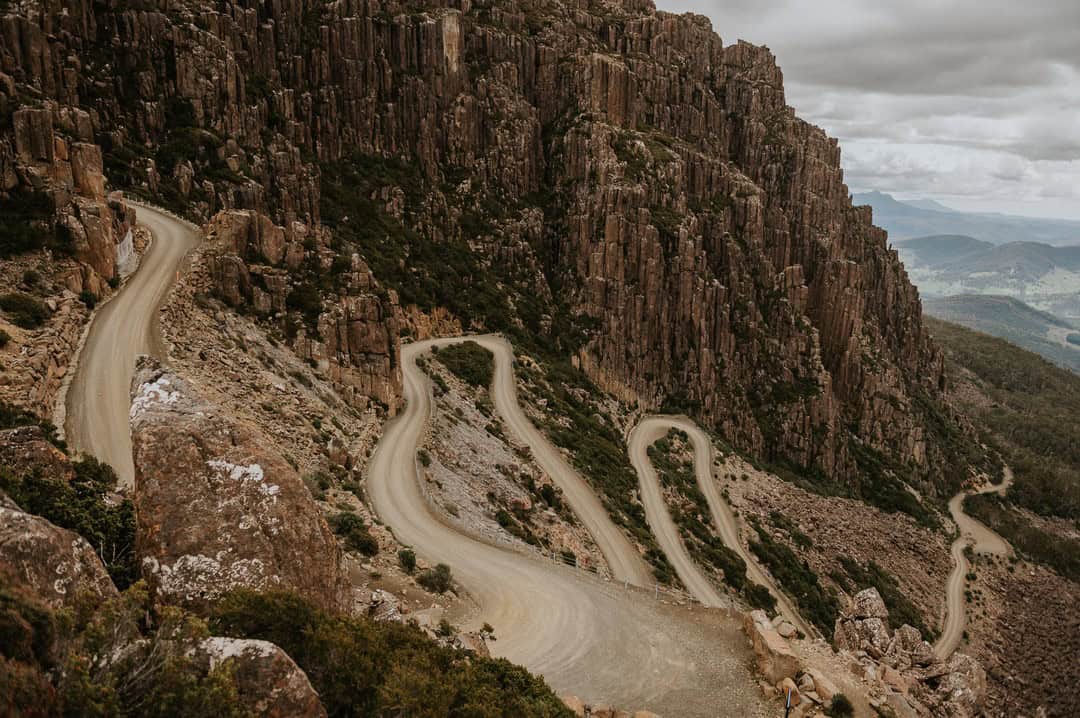
Ben Lomond National Park
Snow lovers will put Ben Lomond at the top of their list of Tasmanian national parks to visit, but it’s beautiful even in the warmer months for walking, biking, and rock climbing. From June through September, the Ben Lomond Alpine Resort – one of only two ski fields in Tasmania – is the best place to ski and snowboard, with over 30 hectares of ski runs.
In the warmer months, enjoy the stunning alpine views, including fields of wildflowers unique to this region. Challenge yourself to the 8-kilometre walk from Carr Villa up to Legges Tor, the second-highest peak in Tasmania. You’ll also see cyclists tackling Jacobs Ladder, a nerve-wracking road full of hairpin turns that will have your legs burning in sympathy.
Park entry: A day pass is $23.25 per person / $46.60 per vehicle, for up to eight people
Ben Lomond, Tasmania
Now that you’ve planned out a perfect trip to one or all of these beautiful Tasmanian national parks, it’s time to start planning. Find all the best activewear here, and make sure to start of your day of exploring with a coffee and pastry from one of these Hobart or Launceston cafes.
 Subscribe
Subscribe









 Subscribe
Subscribe



